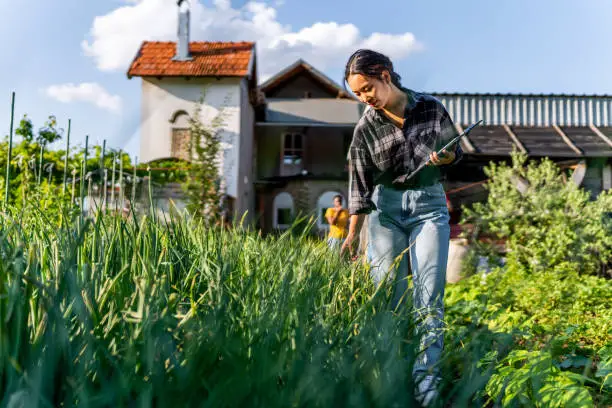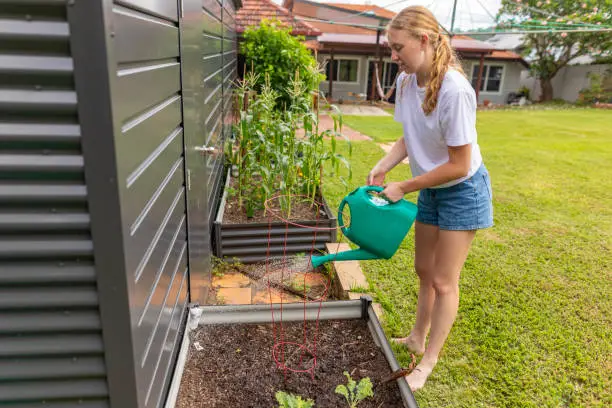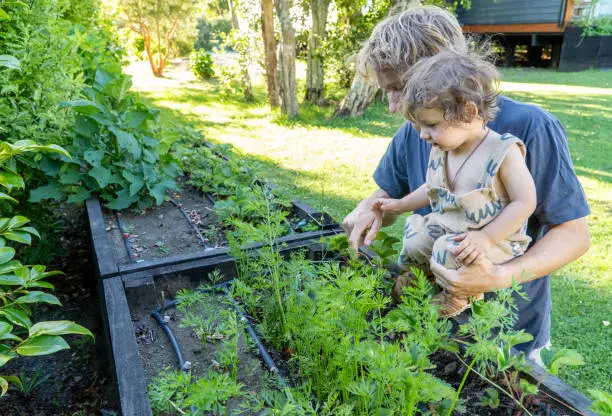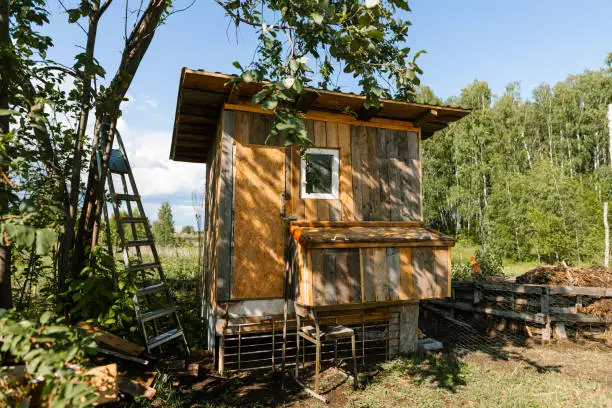Invite birds to dinner? It goes beyond scattering seeds. Roll out the red carpet—or construct them a snug birdhouse and a lovely feeder. Imagine your backyard homesteading filled with birds, creating an avian paradise. Here’s how to build these gorgeous birdhouses.
Start with materials. You needn’t go broke or rob a hardware shop. Reclaimed wood, old fence posts, or planks from that shelf you never built will work. Avoid treated wood—it’s like delivering poison to our feathered guests on a silver platter.
Get your hammer and nails—let’s craft! Create a simple design. Shaped boxes work well. Imagine building a mini-cabin without a mortgage. Cut six pieces of wood: a back, a front (with an entrance hole), two sides, a roof, and a base.
The entrance hole size matters more than expected. Too big? You’ll have squirrels, not sparrows—most little birds like chickadees and wrens like 1-1/2-inch diameter.
Fix your pieces using screws instead of nails for weather resistance. Put drainage holes at the bottom and ventilation near the top for airflow.
Are you feeling fancy? Paint it! However, avoid harmful paints and choose eco-friendly ones if available. Use earthy colors; bright ones may attract animals or deter tenants.
Your new bird mansion must be placed. Keep it 5-10 feet above ground to avoid nosy cats and other ground-dwelling predators. Please attach it to a tree trunk or pole with robust brackets.
After arranging their living quarters, let’s discuss the bird feeder! This endeavor is more straightforward than building a house.
Choose a suitable feeder for your yard. Platform feeders are fantastic all around, while tube feeders are great for finches and sparrows that like to perch.

DIYers—I know you want to use those tools again—can make a primary platform feeder in about an hour! Attach four little legs to another 12×12-inch piece of recycled wood to raise it off the ground on flat surfaces like tables or decks.
If hanging is more your style (and it looks more relaxed), drill holes at each corner of the platform board, thread through some strong twine or rope, and tie knots underneath each hole so they don’t slip when hung high!
Fill it with seed mix designed for local species that frequent area parameters defined during observation periods before installation phase initiation based on findings collected from that place
Okay, I’ll quit sounding like a handbook!
Seriously, black oil sunflower seeds are adored by most birds, whereas Nyjer seeds attract goldfinches. These seeds are exclusively designed for them and are found chewing happily ever after once ensconced comfortably therein.

Wild Wonders: Native Plants Change Your Backyard
Picture this: Your backyard is alive when you enter. Birds sing, butterflies flutter, and rabbits jump by. Sounds like a nature documentary, right? If you plant native species in your backyard, it could happen.
Local fauna treats native plants like VIPs. Over thousands of years, they’ve formed close bonds that make them essential. By using native plants, you’re inviting local wildlife.
Here’s How to Make Your Backyard a Wildlife Sanctuary
First things: Know your zone. No, it’s not some mythical energy field, but your USDA hardiness zone. This helps determine which plants grow in your area. A fast Google search should work.
After that, visit local nurseries or plant sales. These places sell native plants and may advise you on what works in your area.
Nobody likes a dull garden, so talk variety! Add trees, bushes, flowers, and grasses. Each variety has a purpose and attracts different animals.
Birds nest and shelter in trees. Oaks—birds’ high-rise apartments—are great at this! Additionally, they provide acorns for squirrels and other small mammals.
Shrubs feed and shelter animals. Think elderberry or serviceberry plants. Their blooms are beautiful, and their berries feed birds in autumn.
Flowers? Oh, boy! Mix it up—milkweed for monarch butterflies (they’ll adore you forever), coneflowers for bees (they’re magnets), and black-eyed Susans for everyone else.
Grasses may look dull compared to flowers, but don’t underestimate them! Bluestem and switchgrass provide good shelter for ground-nesting birds and small mammals.
Every species requires water! Put a small pond or birdbath in your yard. On sweltering days, a modest water dish can make all the difference.
On hot days, mulch is your buddy! It keeps the soil moist so thirsty plants don’t dry out in the sun, and decomposing mulch replenishes soil nutrients—a win-win!
While on maintenance, avoid insecticides and herbicides, which harm bees and butterflies (who wants fewer butterflies?). Ladybugs love aphids, so use natural pest management wherever possible.
Have you ever heard “build it & they will come”? That is also true—but patience is crucial! Wildlife will eventually find your new haven, but it may take a while
You might even have unexpected visitors like hawks swooping down after seeing lots of prey below or nocturnal animals sneaking around at dusk (like raccoons raiding bird feeders).
You don’t have to go all-in immediately—start small and expand over time based on space limits and personal preferences.
But wait—there’s more exciting stuff ahead beyond flora, though vital:
Include nesting boxes for specific bird species, such as charming little wrens, cardinals, and bluebirds, that need safe places to rear young without predation from invisible shadows.
Imagine your backyard as a bird sanctuary where birds nest and eat. Build birdhouses and feeders to attract them. For birdhouses, utilizing salvaged wood—treated wood is dangerous. Make a simple box with six pieces: back and front with an entrance hole, two sides, a roof, and a base. Small birds should fit through the 1-1/2-inch entrance hole. For durability, use screws, drainage holes, and top ventilation. For predator deterrence, paint the house eco-friendly and raise it 5-10 feet.
Platform feeders are good feeders. DIYers can make one using a 12×12-inch board and four little legs. For hanging, drill corner holes, thread strong string, and tighten. Fill finch feeders with black oil sunflower or Nyjer seeds.
Now, add native plants to your backyard. Determine your USDA hardiness zone when choosing plants. Nearby nurseries offer native plants and assistance. Vary trees, shrubs, flowers, and grasses. Oaks supply acorns and nesting locations. Elderberry shrubs provide food and shelter—bees and butterflies like coneflowers and milkweed. Ground-nesting birds get cover from bluestem.
Install a pond or birdbath. Mulch retains moisture and enriches the soil as it decomposes. Avoid chemicals that kill beneficial insects. Your refuge will attract wildlife, improving your backyard. Enjoy the change and watch your property become a wildlife sanctuary.





Leave a Reply
You must be logged in to post a comment.